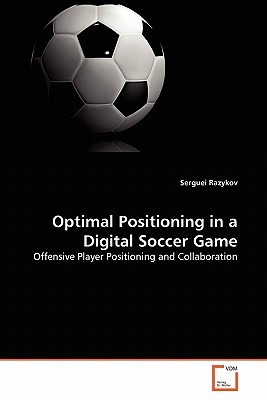
- We will send in 10–14 business days.
- Author: Serguei Razykov
- Publisher: VDM Verlag
- ISBN-10: 3639020723
- ISBN-13: 9783639020724
- Format: 15.2 x 22.9 x 0.7 cm, minkšti viršeliai
- Language: English
- SAVE -10% with code: EXTRA
Reviews
Description
Player positioning is critical in many sport games. This study uses digital soccer as an example and contributes into digital sports games technology. In existing AI positioning methods, an artificial player agent calculates a desired position using current location of the ball and its own role in the team formation. These methods have two disadvantages: neglecting the game dynamics and leaving behind some potentially good positions without consideration; the latter being the common shortcoming of decision tree algorithms. The proposed approach is taking into account the dynamics by determining the available time horizon which limits the feasible area where the optimal position is located. To make sure that all potential alternative positions in the feasible area have been evaluated and considered, the Pareto optimality approach is used. As a result, the proposed method provides the opportunity to create an optimal dynamic formation for the whole team. The ideas of this book should be useful for AI researches and games developers.
EXTRA 10 % discount with code: EXTRA
The promotion ends in 23d.19:40:44
The discount code is valid when purchasing from 10 €. Discounts do not stack.
- Author: Serguei Razykov
- Publisher: VDM Verlag
- ISBN-10: 3639020723
- ISBN-13: 9783639020724
- Format: 15.2 x 22.9 x 0.7 cm, minkšti viršeliai
- Language: English English
Player positioning is critical in many sport games. This study uses digital soccer as an example and contributes into digital sports games technology. In existing AI positioning methods, an artificial player agent calculates a desired position using current location of the ball and its own role in the team formation. These methods have two disadvantages: neglecting the game dynamics and leaving behind some potentially good positions without consideration; the latter being the common shortcoming of decision tree algorithms. The proposed approach is taking into account the dynamics by determining the available time horizon which limits the feasible area where the optimal position is located. To make sure that all potential alternative positions in the feasible area have been evaluated and considered, the Pareto optimality approach is used. As a result, the proposed method provides the opportunity to create an optimal dynamic formation for the whole team. The ideas of this book should be useful for AI researches and games developers.


Reviews